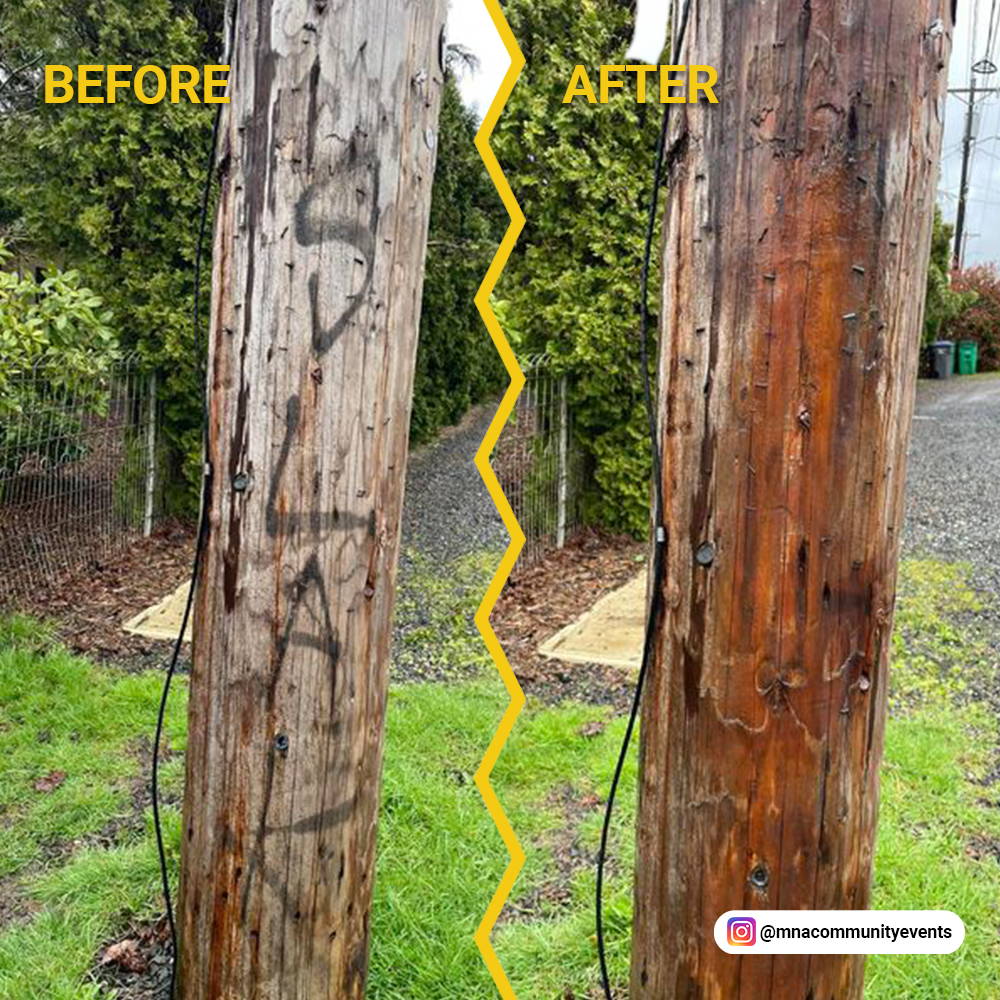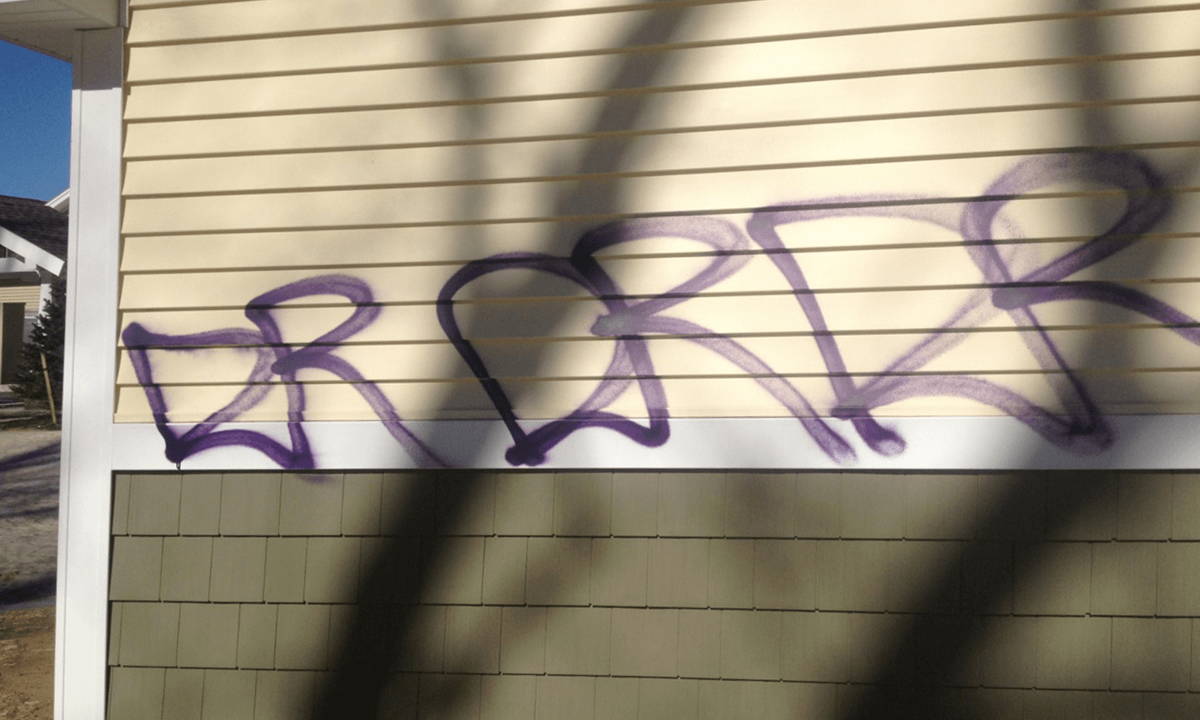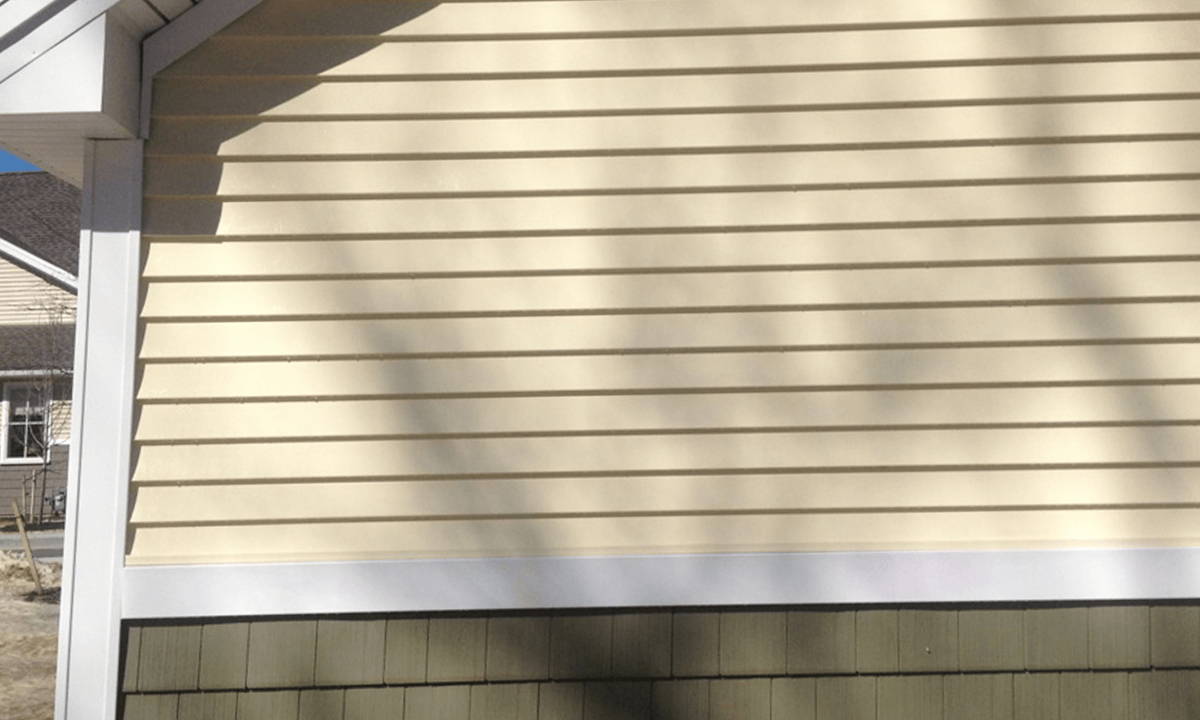There are a number of ways to approach graffiti on wood. Whether you’re dealing with a wooden fence, siding, deck, door, shed, or paneling, the best solution will depend on the condition of the wood and the scale of the job.
If you have A LOT of built up graffiti to remove, the simplest and quickest option may be to color match and paint. If necessary, you can take a sample piece to your local paint store for an accurate match. Remember to paint an entire section from top to bottom and end to end, as this will be far less conspicuous than leaving small patches. Otherwise, even the best color match can stand out, especially when it rains which is likely to reveal even the best of color matches.
Alternatively, you may choose to remove the graffiti.
Bare Brick, Stone & Masonry Graffiti Remover can usually be used in conjunction with a pressure washer. Light agitation while applying this product can be of great assistance. Continued experience with the product will enable you to judge how many applications are necessary for varying surfaces and types of spray paint. On older or thicker graffiti, patience is the key. Keep the graffiti wet with the remover for as long as possible before rinsing.
Remember, wood is made of cellulose fibers and there are solvents and pigments in spray paints which can penetrate and stain wood like ink soaking into blotting paper. Certain timber species, such as western red cedar, may also darken when exposed to alkaline cleaners and while this darkening can normally be cleaned its important to know before embarking on full scale cleaning. Always test first and make sure you can clean a small area perfectly before treating the entire fence or wooden surface.
Depending on the type of graffiti and wooden substrate Transgel may be the best remover. It is PH neutral and completely nonreactive to any natural oils in the timber. It can also soak up inks and stains with a long enough dwell time. Transgel is our first choice for removing thicker coatings such as acrylic, latex paint and polyurethane.
Typically, when removing larger amounts of paint and graffiti from wood, you will need to pressure wash to rinse the dissolved graffiti away. This can be intrinsically troublesome due to the softness and natural aging of timber, as well as the presence of moss, algae, or other growth. If you're not careful with your gunning technique, you can easily leave distinct clean patches where you have been. For this reason, it's best to finish whole sections to even out the final appearance.
Gunning or rinsing too close with a pressure washer can tear into the fibers of the wood and result in a stringy fence, which might create a bigger job of sanding it down later, so be careful not to come in too close with your wand. Use a flat, angled spray tip; never zero degrees or a turbo blaster, which are far too aggressive for timber surfaces.
Graffiti Removal on Wood Panel Home. When removing graffiti from painted wood the
first choice is Sensitive Surface Graffiti Remover. See How
to Remove Paint from Painted Surfaces.
Graffiti being removed from treated wooden fence with World's Best Bare Brick, Stone and Masonry Graffiti Remover. Courtesy of NYC Power Wash, NY.
Tip! If you have a new unpainted wooden fence we highly recommend our World’s Best Graffiti Coating. It offers excellent protection to any natural wooden fence, especially cedar, and pre-stained oiled timber fences.
3 Golden Rules
1) If graffiti is not coming off easily, you're doing it wrong! You may
require a change of tact or use of another product.
2) If you can't
remove a little bit of graffiti, then you're not going to remove a
lot! TEST
FIRST before applying product to an entire job. This way you can determine
if you’re on the right track before embarking on full scale removals.
3) If you're working hard, you're doing it wrong! Forget the scrubbing,
blasting and any other abrasive measures. Put simply, either your products are
working or they’re not. Any problems can be taken care of with the right
technique.

Graffiti removed from wood post using World's Best Bare Brick Stone and Masonry Graffiti Remover



